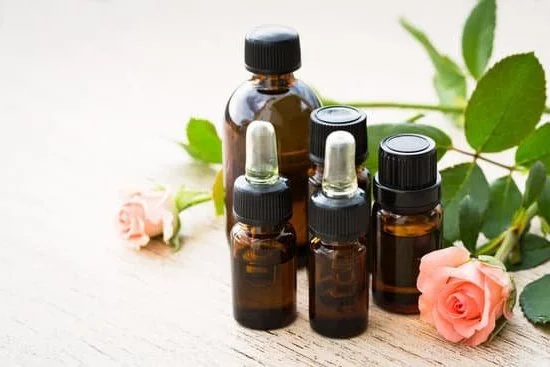Cinnamon bark aromatherapy has been used for centuries for its therapeutic properties and delightful fragrance. Originating from the bark of the Cinnamomum verum tree, cinnamon bark is a popular ingredient in aromatherapy due to its numerous health benefits.
Aromatherapy itself is a holistic healing treatment that uses natural plant extracts to promote overall well-being and has gained recognition for its positive effects on both physical and mental health. In this article, we will explore the history and origins of cinnamon bark, as well as how it is used in aromatherapy to improve health and relaxation.
Cinnamon bark has a rich history, dating back to ancient times when it was used in traditional medicine and religious ceremonies. Today, it is widely utilized in the practice of aromatherapy, which harnesses the power of essential oils extracted from plants to enhance physical and emotional health. Through various methods such as diffusion, topical application, and inhalation techniques, cinnamon bark essential oil can be incorporated into daily routines to support overall wellness.
In addition to its pleasant aroma, cinnamon bark aromatherapy offers a wide range of health benefits. From its anti-inflammatory properties and antioxidant effects to immunity-boosting qualities and improvements in mental clarity and focus, this natural remedy has become an integral part of alternative medicine practices.
As we delve deeper into this article, we will explore different ways to use cinnamon bark in aromatherapy, safety precautions to consider, recipes and blends for DIY enthusiasts, stress relief techniques using cinnamon bark oil, and practical tips for daily incorporation into one’s lifestyle.
Health Benefits of Cinnamon Bark Aromatherapy
Cinnamon bark aromatherapy offers a plethora of health benefits that can positively impact both the mind and body. With its anti-inflammatory properties, cinnamon bark can help alleviate pain and reduce swelling, making it a popular choice for those suffering from conditions such as arthritis or muscle discomfort. The antioxidant effects of cinnamon bark essential oil are also noteworthy, as they can combat free radicals in the body and contribute to overall health and wellness.
Furthermore, incorporating cinnamon bark aromatherapy into your routine can boost immunity by helping the body fight off infections and illnesses. The use of cinnamon bark essential oil in aromatherapy has been known to stimulate the immune system, potentially reducing the frequency of colds and other common ailments. Additionally, the aroma of cinnamon bark has been shown to improve mental clarity and focus, making it an excellent choice for those seeking enhanced cognitive function during work or study.
In addition to these general health benefits, using cinnamon bark in aromatherapy can promote relaxation, reduce stress, and elevate mood. The warm and spicy scent of cinnamon has a calming effect on the mind, making it an ideal choice for individuals looking to de-stress after a long day or seeking relief from anxiety. Whether diffused in a room or used topically in massage oils or bath products, cinnamon bark aromatherapy is a versatile tool for promoting overall well-being.
Different Methods of Using Cinnamon Bark in Aromatherapy
Cinnamon bark has been used for its aromatic and therapeutic properties for centuries. In aromatherapy, cinnamon bark essential oil is highly valued for its warm, spicy scent and numerous health benefits. There are several methods of using cinnamon bark in aromatherapy that allow individuals to experience its full potential.
Diffusing Essential Oils
One popular method of using cinnamon bark in aromatherapy is through the use of diffusers. These devices disperse microscopic particles of essential oils into the air, allowing the aroma to fill a room. Diffusing cinnamon bark essential oil can create a cozy, inviting atmosphere while also benefitting from its anti-inflammatory and immune-boosting properties. This method is particularly effective for improving mental clarity and focus, making it a great option for work or study spaces.
Topical Application
Another way to utilize cinnamon bark in aromatherapy is through topical application. When diluted properly with a carrier oil, such as coconut or jojoba oil, cinnamon bark essential oil can be applied to the skin for various benefits. It is important to note that due to its potent nature, proper dilution ratios should be followed to avoid skin irritation. Topical application of cinnamon bark essential oil may help reduce inflammation and promote relaxation when used in massage oils or lotions.
Inhalation Techniques
Inhalation techniques involving cinnamon bark essential oil can also provide therapeutic effects. Adding a few drops of the oil to hot water for steam inhalation can help improve respiratory health and alleviate congestion. Additionally, inhaling the scent directly from the bottle or applying a drop to a tissue for easy access throughout the day can provide mood-boosting and stress-relieving benefits.
By incorporating these various methods of using cinnamon bark in aromatherapy into daily routines, individuals can experience the wide range of benefits this powerful essential oil has to offer. Whether it’s creating a calming environment at home or utilizing it for self-care practices, cinnamon bark aromatherapy is a versatile and effective tool for promoting overall wellness.
Safety Precautions and Considerations
When using cinnamon bark in aromatherapy, it is important to take safety precautions and consider certain factors to ensure a positive and safe experience. While cinnamon bark aromatherapy can provide numerous health benefits, it is also crucial to be aware of potential side effects and contraindications.
Firstly, it is essential to note that cinnamon bark essential oil is highly concentrated and potent. As such, it should always be diluted before use to prevent skin irritation or allergic reactions. A recommended dilution ratio for cinnamon bark essential oil is 1-2%, meaning that it should be mixed with a carrier oil such as coconut or almond oil before applying it to the skin.
Furthermore, individuals with specific medical conditions such as epilepsy or liver disease should consult with a healthcare professional before using cinnamon bark aromatherapy. Cinnamon bark essential oil may interact with certain medications or exacerbate pre-existing health issues, so it is crucial to exercise caution and seek medical advice if necessary.
In addition, some individuals may experience sensitivity or allergic reactions when using cinnamon bark aromatherapy. It is advisable to perform a patch test before fully incorporating cinnamon bark essential oil into your aromatherapy practice.
This simple test involves applying a small amount of diluted oil to an area of skin and monitoring for any adverse reactions over the course of 24 hours. By taking these safety precautions and considerations into account, individuals can enjoy the benefits of cinnamon bark aromatherapy while minimizing the risk of potential complications.
Cinnamon Bark Aromatherapy Recipes and Blends
Cinnamon bark aromatherapy offers a variety of benefits, and one of the most popular ways to experience these advantages is through the use of essential oil blends and recipes. By incorporating cinnamon bark essential oil into different mixtures, individuals can enhance their overall well-being and create a soothing atmosphere at home or work.
One common way to enjoy the benefits of cinnamon bark aromatherapy is by using DIY diffuser recipes. By combining cinnamon bark essential oil with other complementary scents such as orange or clove, individuals can create a warm and inviting aroma that not only freshens the air but also provides potential health benefits. Diffusing these blends can help purify the air and promote relaxation.
In addition to diffuser recipes, cinnamon bark essential oil can be used in massage oil blends. When combined with a carrier oil such as coconut or jojoba oil, cinnamon bark essential oil can create a warming and comforting massage blend.
This blend can be used to soothe sore muscles and joints while also providing a calming effect on the mind and body. Additionally, adding cinnamon bark essential oil to bath and body products such as lotions or bath salts can elevate the overall bathing experience, further promoting relaxation and stress relief.
Overall, incorporating cinnamon bark aromatherapy recipes and blends into daily life can provide numerous benefits for both physical and mental well-being. Whether it’s through diffusing essential oils, creating massage blends, or enhancing bath products, cinnamon bark aromatherapy offers an array of options for individuals seeking natural remedies for relaxation and stress relief.
Cinnamon Bark Aromatherapy for Stress Relief
Cinnamon bark essential oil has been used for centuries in aromatherapy to promote relaxation and alleviate stress. The warm, sweet, and spicy aroma of cinnamon bark is known for its comforting and soothing properties, making it an ideal choice for stress relief. This section will explore the ways in which cinnamon bark aromatherapy can be utilized to reduce anxiety and tension, as well as the relaxation techniques that can enhance its effectiveness.
Inhaling the scent of cinnamon bark essential oil through methods such as diffusing or direct inhalation can have a calming effect on the mind and body. Studies have shown that the aroma of cinnamon can help to reduce stress and improve mood. Additionally, combining cinnamon bark with other essential oils such as lavender or bergamot can create a synergistic blend that further enhances its stress-relieving benefits.
Aside from inhalation, cinnamon bark aromatherapy can also be incorporated into massage oils and bath products for a more immersive relaxation experience. When combined with carrier oils such as sweet almond or jojoba, cinnamon bark essential oil can be applied topically during a massage to ease muscle tension and promote a sense of well-being.
Incorporating relaxation practices such as meditation, deep breathing exercises, or yoga along with cinnamon bark aromatherapy can amplify its stress-relieving effects. Creating a calming environment with soft lighting, soothing music, and comforting scents can further enhance the overall relaxation experience. By integrating these practices into daily life, individuals can harness the power of cinnamon bark aromatherapy to manage stress and cultivate inner peace.
| Method | Description |
|---|---|
| Diffusing essential oils | Utilizing an essential oil diffuser to disperse the aroma of cinnamon bark in the air. |
| Topical application | Mixing cinnamon bark essential oil with a carrier oil for topical application during massages or baths. |
| Inhalation techniques | Breathing in the scent of cinnamon bark either directly from the bottle or by using inhalers. |
Incorporating Cinnamon Bark Aromatherapy Into Daily Life
Cinnamon bark aromatherapy offers a variety of benefits, from reducing stress and anxiety to boosting immunity and mental clarity. Incorporating cinnamon bark aromatherapy into your daily life can be a simple and effective way to promote overall wellness. Whether you prefer diffusing essential oils, creating DIY blends, or simply enjoying the aroma of cinnamon bark in your environment, there are many ways to incorporate this aromatic therapy into your routine.
Creating a calming environment at home or work is one way to incorporate cinnamon bark aromatherapy into daily life. By using a diffuser or placing potpourri infused with cinnamon bark essential oil in your space, you can enjoy its soothing and relaxing effects throughout the day. The warm and spicy aroma of cinnamon bark can create a cozy and inviting atmosphere, promoting relaxation and reducing stress.
In addition to using aromatherapy for environmental purposes, you can also use it for self-care and relaxation. Consider creating massage oil blends or bath products infused with cinnamon bark essential oil for a truly indulgent experience. When used topically, the anti-inflammatory and antioxidant properties of cinnamon bark can provide additional benefits for your skin and overall well-being.
| Benefits | Methods of Use |
|---|---|
| Reducing stress and anxiety | Diffusing essential oils |
| Boosting immunity | Topical application |
| Promoting mental clarity | Inhalation techniques |
Conclusion and Further Resources
In conclusion, cinnamon bark aromatherapy offers a wide range of health benefits and therapeutic uses. From its anti-inflammatory properties to its ability to boost immunity and improve mental clarity, it is clear that this essential oil can be a valuable addition to anyone’s wellness routine. Whether diffused, applied topically, or used for inhalation techniques, cinnamon bark aromatherapy provides a versatile and effective way to promote overall well-being.
As with any form of aromatherapy, it is important to take into consideration safety precautions and potential side effects. Understanding recommended dilution ratios and contraindications for certain medical conditions is crucial in ensuring the safe use of cinnamon bark essential oil. By being informed and responsible in its use, individuals can fully enjoy the benefits of this powerful aromatherapy tool without any adverse effects.
For those interested in incorporating cinnamon bark aromatherapy into their daily lives, there are numerous recipes and blends available for DIY diffusers, massage oils, and bath products. Additionally, the stress-relief properties of cinnamon bark make it a valuable resource for relaxation and self-care practices. By creating a calming environment at home or work through the use of aromatherapy, individuals can effectively manage stress and anxiety while promoting a sense of well-being.
For further information on aromatherapy resources and recommendations, there are abundant reading materials available for enthusiasts to explore and deepen their knowledge of this holistic practice. Whether looking for additional recipes or learning more about the benefits of specific essential oils like cinnamon bark, there is no shortage of information available to support ongoing wellness efforts through aromatherapy.
Frequently Asked Questions
What Is Cinnamon Bark Essential Oil Used For?
Cinnamon bark essential oil is commonly used for its antibacterial, antifungal, and anti-inflammatory properties. It can also help with digestive issues, promote circulation, and relieve pain and stiffness.
Is Cinnamon Bark Safe to Diffuse?
While cinnamon bark essential oil can have many benefits when diffused, it is important to use caution. This oil is potent and should be diffused in small amounts to avoid irritation or allergic reactions. It’s best to blend it with other milder oils.
What Is the Difference Between Cinnamon and Cinnamon Bark Essential Oils?
The main difference between cinnamon and cinnamon bark essential oils lies in their chemical composition. Cinnamon bark oil is derived from the outer bark of the tree, while cinnamon leaf oil comes from the leaves. They have similar properties but may vary in potency and potential uses.

Are you looking for a natural way to improve your health and wellbeing?
If so, aromatherapy may be the answer for you.






